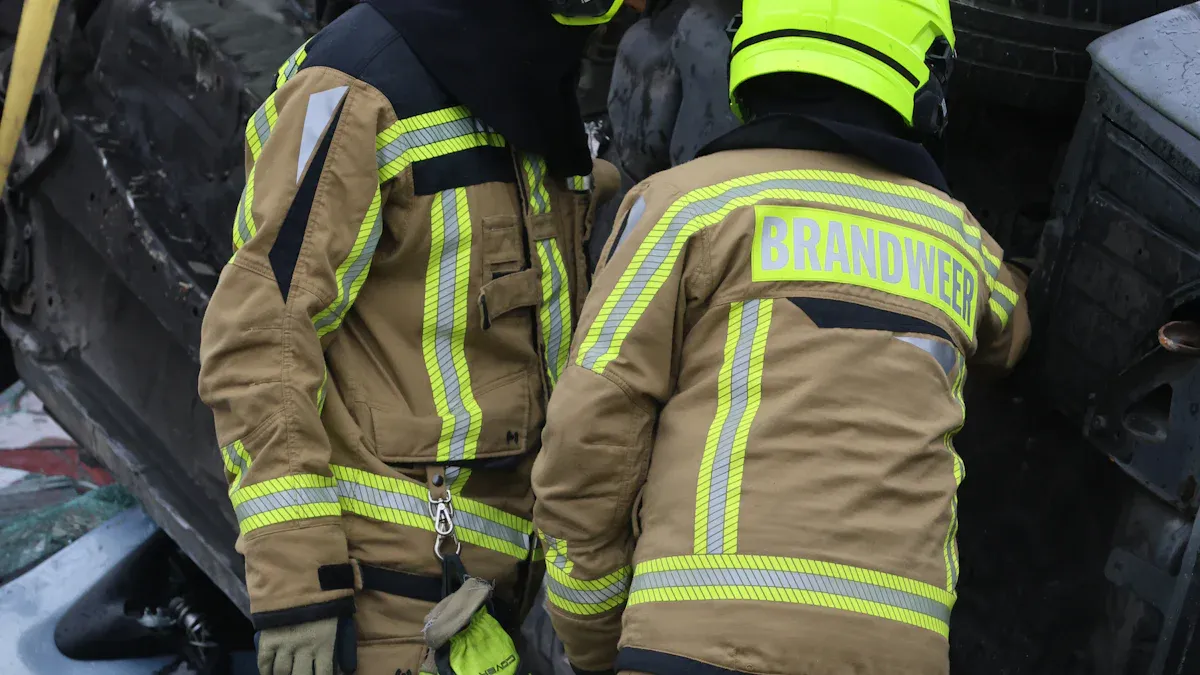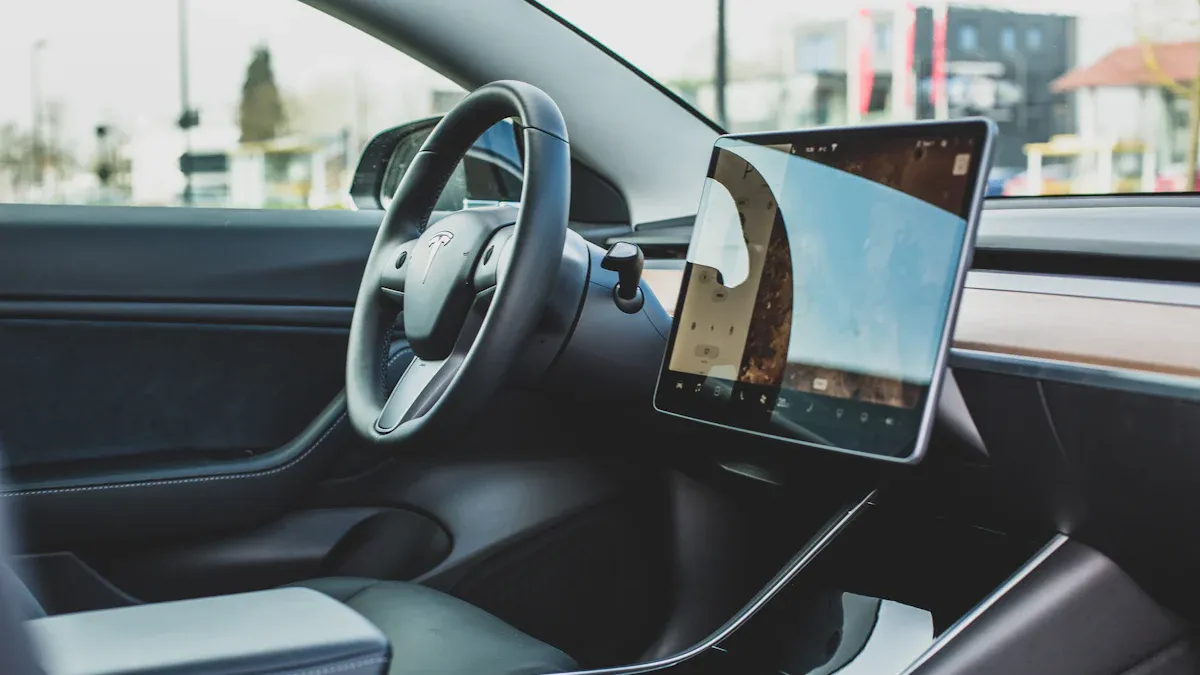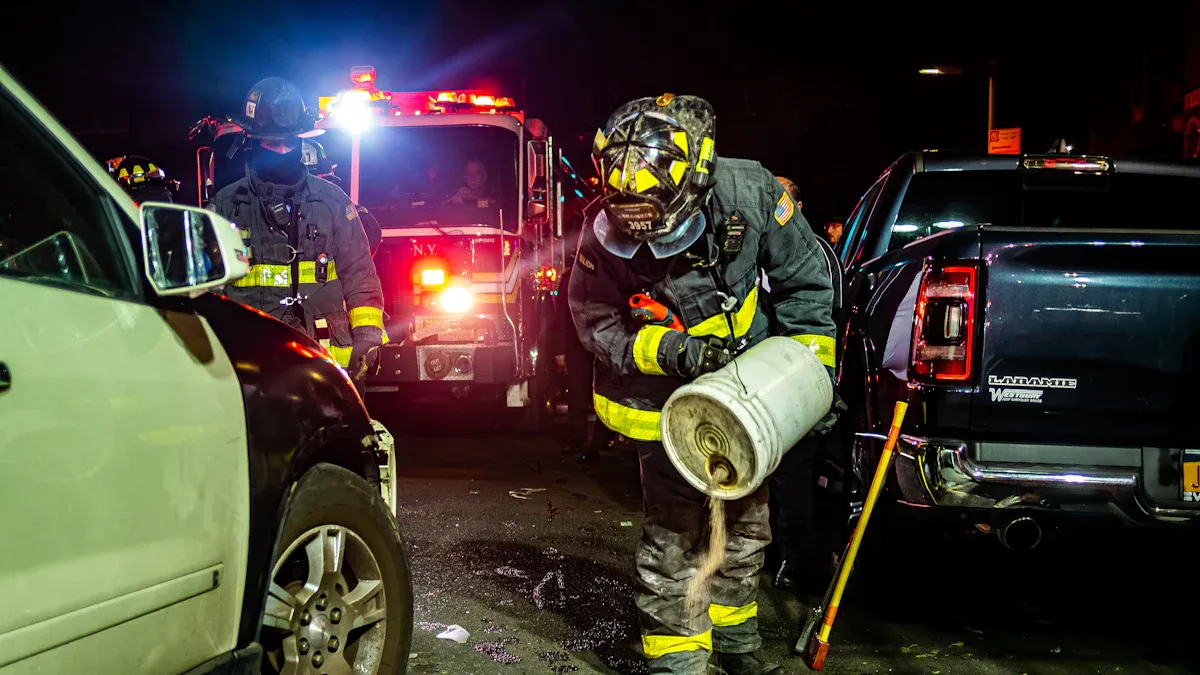
Video telematics is a proven way to minimize accident rates in fleets. Many fleets experience numerous accidents, unclear blame, and higher insurance costs.
72% of fleets have fewer crashes and claims after using telematics. About 25% of operators pay less for insurance because of safer driving.
You may face some problems:
| Pain Point | Description |
| Medical and legal costs | Accidents cause big bills and legal fees, especially with large verdicts. |
| Insurance premium increases | Insurance costs went up by 47% per mile from 2010 to 2020 because of accidents. |
| Operational disruptions | Accidents mess up schedules, cause delays, and hurt the supply chain. |
| Reputational damage | Accidents can hurt your company’s reputation and make customers trust you less. |
| Employee morale and turnover | Accidents cause stress, lower work output, and make more people quit |
Video telematics uses real-time monitoring, AI driver behavior checks, and location tracking to help with these problems. This technology helps investigators see what happened, find out who is at fault, and protect drivers from false claims.
Key Takeaways
- Video telematics helps lower accident rates a lot. 72% of fleets have fewer crashes after using it. Real-time alerts and AI watch for risky driving. This helps people fix problems right away. In-cab coaching and feedback make drivers safer. This can cut incidents by up to 60%. After an event, analysis gives clear proof for insurance claims. This protects against false blame and saves money. Picking the right video telematics system is important. Good training helps people use it well and stay safe.
What Is Fleet Video Telematics?

Fleet video telematics is a smart tool that helps you keep your vehicles safe. It uses video and telematics data like GPS and driver checks. This system lets you see how your fleet works every day. It is better than old dash cams because it uses more cameras and saves more video. You get more than just video. You get a tool that helps lower accident rate and keeps drivers safe.
Core Components: MDVR, AI, and Tracking
A fleet video telematics system has a few main parts that work together:
- Video Capture Unit: This part uses many cameras and records clear video. You can see inside and outside your vehicles.
- Positioning & Communication Module: GPS helps you know where each vehicle is. The system sends info over networks around the world.
- Processing & Storage: Big storage keeps video and data safe. Strong hardware makes sure it works well.
- Sensor Integration: Sensors like gyroscopes and vibration detectors show how the vehicle moves.
All these parts help you see what happens on every trip.
How Video and Data Work Together
When you use video with telematics data, you learn about driver actions right away. Cameras and sensors show what happens on the road. The system checks this info to find risky moves. You can help drivers by showing them real events. This way, you lower accident rate by turning data into safety tips.
| Integration Aspect | Description |
| Video Telematics | Uses AI-powered dash cams and sensors to watch driver actions and vehicle health. |
| Actionable Insights | Turns data into tips for safer routes, better driving, and easier fixes. |
| Safety Monitoring | Shows you your whole fleet, so you can fix problems fast. |
Integration with Fleet Management Systems
You can link fleet video telematics with your other tools. Good systems work with vehicle checks and GPS. Many companies help you connect everything easily. To do your best, pick the right cameras, use cloud for easy access, and teach drivers why it matters. Check video and data often to keep safety first.
Tip: Partner with HBOIOT, a trusted provider of intelligent fleet safety solutions, to ensure your system is tailored to your operational needs.
How Video Telematics Minimizes Accident Rate

Real-Time Incident Detection
Fleet video telematics helps you spot problems right away. The system uses edge-based AI to watch for risky driving. It looks for things like distractions or quick lane changes. When something unsafe happens, you get alerts fast. This lets you act quickly and keep drivers safe. The table below shows how these features work together to lower accident rate:
| Feature | Contribution to Accident Prevention |
| Edge-Based AI Processing | Quickly checks video to find risky actions like distracted driving. |
| Real-Time Alerts | Tells drivers and managers about dangers so they can act fast. |
| Proactive Collision Prevention | Finds possible crashes and unsafe driving to help stop accidents. |
| Enhanced Driver Accountability | Watches for risky actions to help drivers make safer choices. |
| Complete Operational Visibility | Gives info about the fleet to spot dangerous routes. |
Many companies have seen big changes after using these tools. Lansberry Trucking saw claims losses drop by 80% after adding video telematics. Real-time video and quick alerts helped them use safer habits and handle claims better.
Driver Behavior Monitoring Fleet
Driver behavior monitoring helps your team drive safer. The system uses cameras and sensors to collect data. It looks for things like speeding, hard braking, and distractions. You can see which drivers need help and who sets a good example. This helps you lower accident rate by finding the real reasons for risky driving.
Telematics systems give you clear video proof. Drivers know they are being watched, so they act more carefully. You can coach them using real events. This helps build safer habits and makes the fleet safer. Managers can see how each driver does their job. You can find problems and fix them fast. In-cab cameras show both good and bad driving. You can use this for training and rewards.
| Key Component | Description |
| Data collection | Gets info from telematics systems |
| Analysis of driving patterns | Checks for things like speeding and hard braking |
| Identification of risky behaviors | Finds actions like distracted driving |
AI in cameras looks for unsafe things like distractions or speeding. When it finds a problem, it warns the driver right away. This helps stop accidents before they happen.
In-Cab Alerts and Coaching
In-cab alerts give drivers feedback right away. The system warns them if they do something risky, like following too close or using a phone. Supervisors can coach drivers with real video clips. This makes training easier and more helpful.
When supervisors coach and drivers get alerts, risky driving drops a lot. One study showed a 60% drop in incidents and an 86% drop in crash costs. Another study showed risky actions went down by 37% to 52% with in-cab feedback and coaching.
These tools help drivers learn from mistakes. You can also reward safe driving. This keeps your team focused on safety.
Post-Event Analysis
After something happens, you can look at video and data to see what went wrong. This helps you find the cause and stop it from happening again. The table below shows how post-event analysis helps lower accident rate:
| Evidence Type | Description |
| Trend Identification | Helps spot patterns that could cause accidents before they happen. |
| Vulnerability Flagging | Points out weak spots in fleet operations that need fixing. |
| Proactive Measures | Uses real-time data to make things safer before problems start. |
You get clear proof for insurance claims. This helps you avoid fake claims and fix problems faster. Drivers know you will check incidents, so they drive safer. You can use what you learn to update safety rules and training.
- Recorded events give clear proof if there is an accident.
- Helps solve insurance claims and stops fake claims.
- Makes drivers more careful and lowers risky actions.
When you use fleet video telematics, you see good results over time. Fleets with video telematics have up to 80% fewer incidents and 50% lower claim costs than those without it. You make your fleet safer and lower accident rate every year.
Insurance and Regulatory Benefits
Exoneration and Liability Protection
Fleet video telematics helps protect your drivers and company. If there is an accident, you have video proof of what happened. This makes it easier to show who caused the crash. It also helps stop people from making false claims. Insurance experts say video proof is strong evidence. It is hard for others to argue against what the video shows.
Bridgette Blitch, Esq., says, “If you have technology on board to show that the driver was free from negligence and did everything they could to avoid the collision, it’s going to be very difficult for prosecutors or plaintiff’s attorneys to dispute the video.”
Dash cam for commercial vehicles lets you get video and location fast. This helps prove your driver did nothing wrong. It keeps your team safe from unfair blame. As big court verdicts become more common, video proof is even more important.
Lower Insurance Costs
Video telematics can help you pay less for insurance. Insurance companies see that fleets with these systems have fewer crashes. Many give discounts to fleets that use driver behavior monitoring fleet technology.
| Statistic | Percentage |
| Satisfaction with investment in video camera systems | 84% |
| Lower insurance rates as a primary factor for investment | 64% |
| Fleets receiving an insurance discount for using video telematics | 54% |
| Self-insured fleets reporting reduction in accident losses | >33% |
You can also get these benefits:
- 70% of fleets say they are better protected from false claims.
- 42% have lower accident costs.
- 34% pay less for insurance.
Some insurance companies use usage-based insurance now. They look at your driver data and give lower rates for safe driving. This helps you lower accident rate and save money.
Regulatory Compliance and Support
Fleet video telematics helps you follow rules and laws. The system tracks driver hours, rest times, and road safety rules. It keeps records ready for inspections.
| Regulatory Requirement | Description |
| Driver Vehicle Inspection Reports (DVIR) | Digital reporting helps fleets quickly identify safety concerns and streamline reporting for compliance. |
| Electronic Logging Mandate | Requires electronic logging devices for hours of service, ensuring compliance with federal mandates. |
| Cell Phone Usage | Video telematics can detect distracted driving, aiding compliance with state bans on handheld devices. |
| Speeding | Telematics monitors driving speed and alerts for compliance with speed regulations. |
Regulators like these systems because they help you follow the rules. You can track repairs, work hours, and even emissions. This helps you avoid fines and keeps your fleet working well.
Implementing Video Telematics for Safety
Choosing the Right Solution
You need a video telematics system that works for your fleet. First, look at what matters most:
| Criteria | Description |
| Scalability | Make sure the system can grow with your fleet. |
| Integration | Check if it connects to your GPS or fleet tools. |
| Data Accessibility | See how easy it is to get video and how long it stays. |
| Vendor Support | Pick a company that helps and teaches you well. |
| Cost Comparison | Look at prices and think about saving money later. |
| Demo or Trial | Try a demo to see if it is simple to use. |
| Feedback from Users | Ask drivers and managers what they think. |
| Training | Make sure everyone gets good lessons on using it. |
Decide how many cameras you want and where to put them. Think about where to keep the video. Add sensors for speed and rough driving. AI features are helpful, but they may cost more and need extra planning.
Training and Driver Buy-In
Training helps everyone learn the system. Get drivers involved early and answer their questions. Some drivers worry about privacy or think it is hard to use. Tell them video telematics only records during work time and keeps people safe. Good lessons show drivers how to use the system and read the data. When drivers feel part of the plan, they help make it work.
Tip: Talking openly and having clear rules helps everyone trust the system and makes starting easier.
Setting Safety Policies
Change your safety rules to include video telematics. Here are some steps you can follow:
- Talk with your team and listen to what they say.
- Make a plan for setting up and teaching everyone.
- Teach all workers how to use the system and check the data.
- Watch the system often to make sure it works right.
Clear rules for using video and data help everyone feel safe and respected.
Measuring and Improving Results
You need to check how well the system works. Look for changes in how drivers act, like less rough braking or speeding. Watch for fewer accidents and safety problems. For example, a 10% better safety score can mean 8% fewer accidents. Some fleets saw 37% less rough braking and 42% less speeding after one year with telematics.
Keep making things better by coaching drivers, giving rewards for safe driving, and checking results often. These steps help lower accident rate and build a safer team.
You can make accidents happen less often by using fleet video telematics. This also helps you spend less money.
You also save money on gas and fixing vehicles. To begin, do these things:
- Pick the best system for your fleet.
- Put in and connect the hardware.
- Teach drivers and make easy safety rules.
Fleet managers should check insurance and rule benefits before choosing.
FAQ
How does video telematics help you lower accident rates?
You get alerts right away and video proof. The system looks for unsafe driving. You can help drivers by showing real examples.
Video telematics lets you find problems fast and make things safer.
Can you use dash cams for commercial vehicles with your current fleet management system?
Most dash cams work with top fleet management tools. You can link cameras, GPS, and driver info.
- Ask your provider if it is easy to connect.
- Many systems are simple to set up and use.
What data does driver behavior monitoring collect?
Driver behavior monitoring gets info on speed, braking, distraction, and routes.
| Data Type | Example |
| Speed | Going too fast |
| Braking | Stopping quickly |
| Distraction | Using a phone |
Will insurance companies accept video telematics data for claims?
Insurance companies believe video proof. You can show what happened in a crash.
Many insurance companies give discounts if you use video telematics for your fleet.
